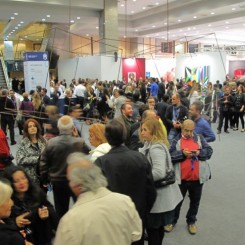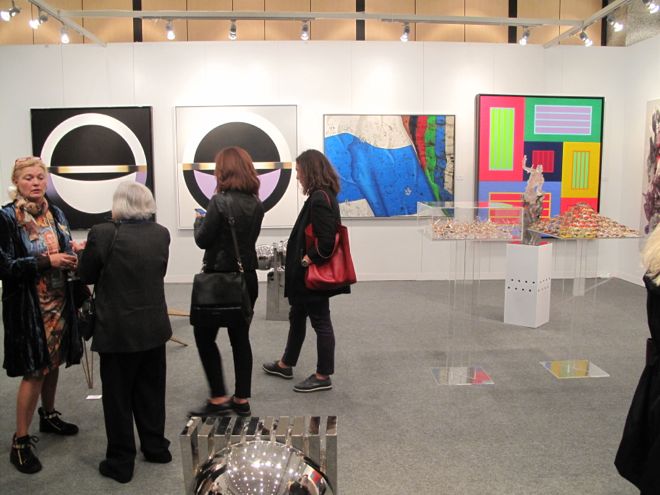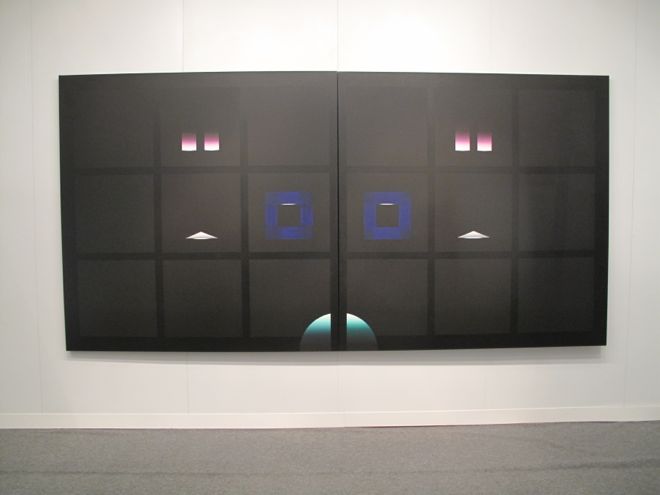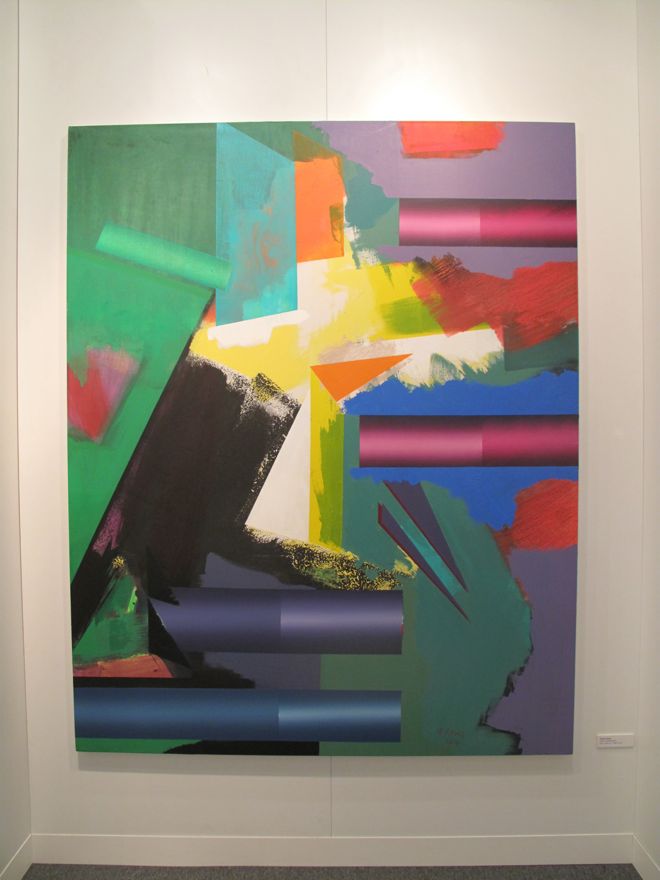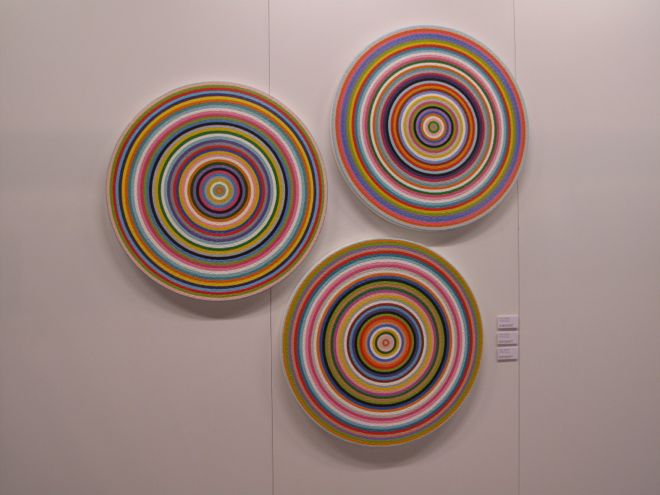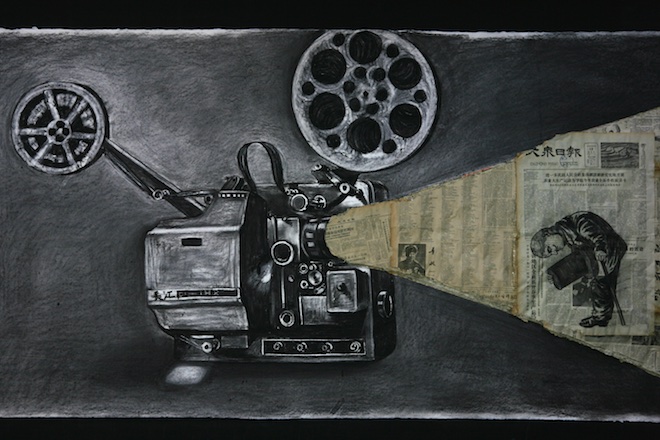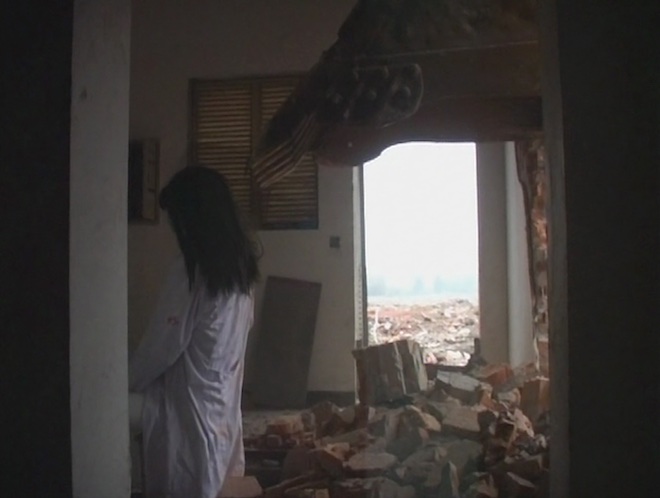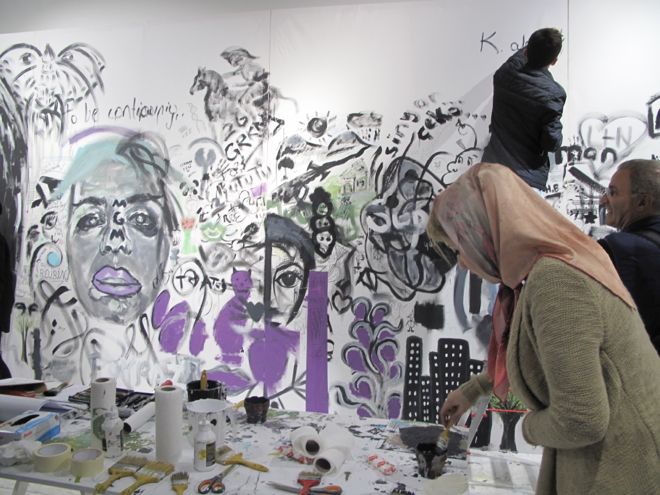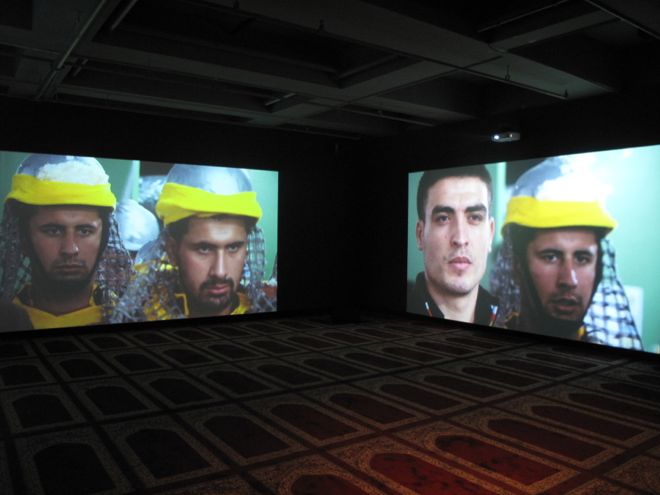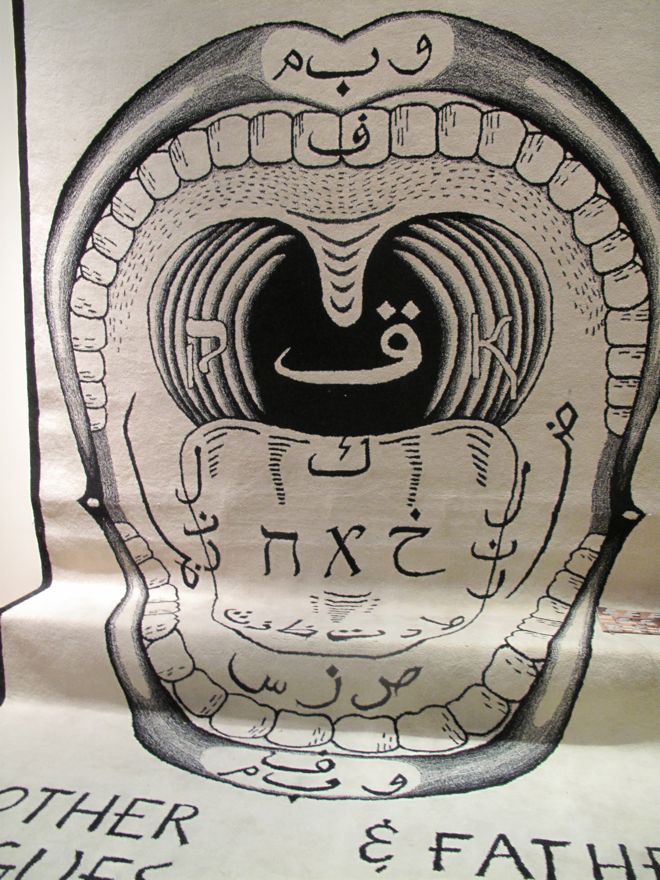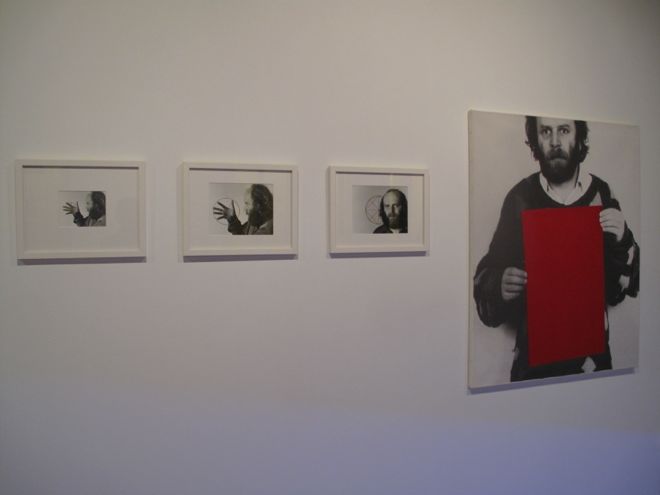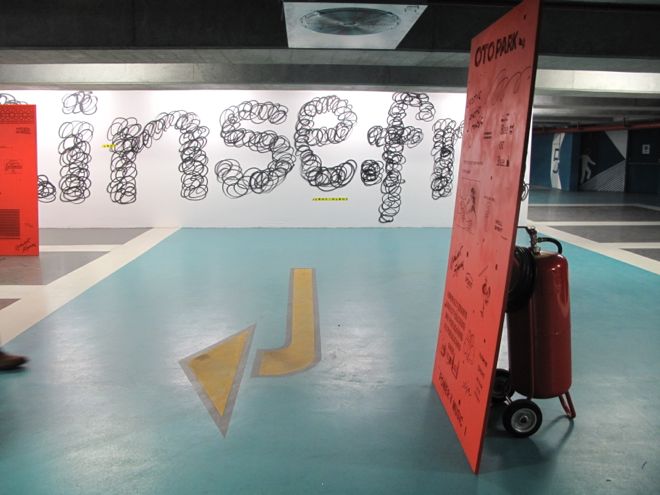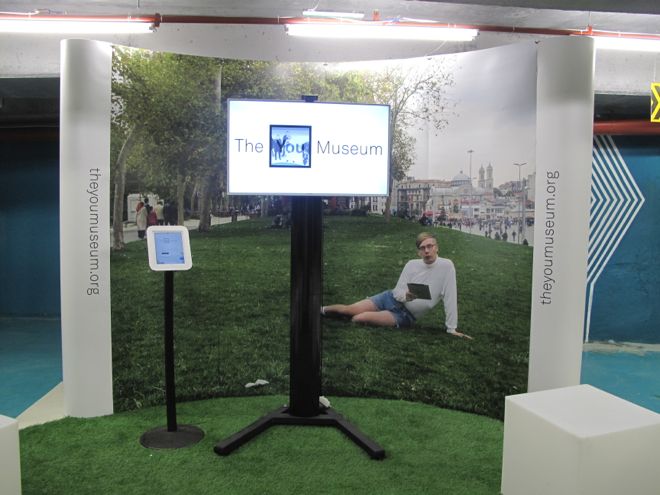Never judge a book by its cover. Oh, but what a cover! Istanbul is one of the most beguiling cities in the world. Dripping with history and set beautifully along the Bosphorus, the city is undergoing yet another of its many rebirths. Aside from its formidable history dating back to the Ottomans, the Byzantines and even before the Emperor Constantine, the city is now also undergoing an art boom of sorts—with a few major museums in the works (more details here). The migratory birds of the art world are paying attention—and more would land, if only the Istanbul Biennale happened closer in time to Venice.
First, an art fair. Contemporary Istanbul (Nov 13–16) is the granddaddy of the art fairs—well-connected, but a decidedly local affair. In contrast to the top-notch graphic design, one cannot help but feel faint disappointment in the booths—which are mixed in quality and often crammed with works (Chinese readers can think of Art Beijing or previous versions of SHContemporary). There is, indeed, a raw energy present, and one does sense that the fair, in the face of that other fair (ArtInternational Istanbul, backed by some of the same people as Art14 in London, Art Sydney, Art India, and the new Art Central in Hong Kong, among others), is trying many, many things—a limited edition section, a design/art cross-over “Plugin” section, a special section on China, as well as a manic and intriguing platform with 90-minute shows… Sprawling and rather unwieldy, Contemporary Istanbul is certainly no Frieze or Basel (but then nor is that other fair, which one C.I. representative dismissed as something like a “jewelry fair”). Not to say there were no good works—not at all—but presentation matters. The mini-retrospective on Adnan Çoker (Olcayart) was impressive while Pi-Artworks showed, among other pieces, video works by Nancy Atakan. One particularly unfortunate and unlucky matter of timing was that the very year Contemporary Istanbul chose China for its “New Horizons”, Art021 in Shanghai entered its second year with great interest from other Chinese and Asian galleries.
So the focus on China, in the end, was “Now You See”, a presentation of Dr. Michael J. Jacobs’ Chinese video collection—which Jacobs himself was quite surprised about (disclosure: Michael Jacobs is an investor in randian). Tucked into the section next to “Plugin” (digital arts), this presentation of 18 videos from his collection of young video artist—in many ways a surprising, experimental choice—would already be a rare opportunity to see young, up-and-coming Chinese video artists in the US and Europe, let alone Istanbul. A similar selection had been presented at White Box Center in New York last year, which, as Jacobs said, was the second time video art from China was presented in an institutional setting in America. Works by Jiang Zhi, Cheng Ran and Sun Xun, among others, were shown; one could only wish that such a dynamic bunch of Chinese video artists could be presented elsewhere.
Outside the busy, well-attended fair, there is plenty more to see (see our Istanbul art guide); here we focus just on a few. Probably the most important among the spaces is SALT, an art institution with three spaces funded by Garanti Bank. SALT Beyoğlu presented a probing exhibition on summer homes, a different urbanism, and notions of leisure through architectural maquettes and drawings, documents, film and photography, and well as furnishing (“Summer Homes: Claiming the Coast”; Sep 5–Nov 16, 2014). Pawel Althmaer’s “Draftsmen’s Congress” also landed there for its next stop (Nov 14, 2014–Jan 18, 2015) “Rainbow in the Dark” at SALT Galata (Nov 14, 2014–Jan 18, 2015) was probably the highlight, featuring issues related to religious rituals and mysticism in a dialogue between artists from Poland, Turkey and elsewhere—in the magnificent former Ottoman Bank building, no less. Slavs and Tatars’ “Mother tongues and Father Throats” included not just a carpet but a beautiful and well-researched book devoted to a phoneme, the voiceless velar fricative “kh” (“ch” in German, “h” in Mandarin, or “j” in Spanish). Wael Shawky’s “Cabaret Crusades: The Path to Cairo” (shown previously at Documenta 13 and elsewhere) recreated the Crusades according to Arab chronicles using clay puppets, while Köken Ergun’s “Ashura” documents the raw Shi’ite rituals of the festival of Ashura, which concerns the martyrdom of Husayn ibn Ali, in a Turkish neighborhood. Together with Artur Zmijewski’s “The Mass” (2011)—a theatrical re-enactment of a Roman Catholic mass—one ponders the performative as lived-in reality in everyday religious ritual, among other issues. Yet in light of the recent protests in Taksim, one also wonders what limits might be inscribed by this space, funded as it is by the Garanti Bank (which was criticized in relation to NTV’s news coverage).
Another highlight was the ARTER’s “Roving Eye”, curated by Iola Lenzi from Singapore, a show dedicated to seeking out certain commonalities in Southeast Asian art (a review will be forthcoming). Sutee Kunavichayanont’s “History Class”, by now fairly well-known, encapsulates one particular strain of artistic practice in its mix of politics, folk iconography, and popular participation. FX Harsono had a new commissioned video piece (“Purification”), Vu Dan Tan presented a few pieces of his reconfigured dolls made from matchboxes and other everyday items, and Lee Wen exhibited the participatory ping-pong table (“Ping-Pong Go Round”). Given the 40 works by 36 artists, it was an impressive exhibition to see outside Southeast Asia—and it was clear from the quality of the installation that no expense was spared. One can only hope for great things when the Koç Museum (the Koç Foundation funds ARTER) opens in a few years.
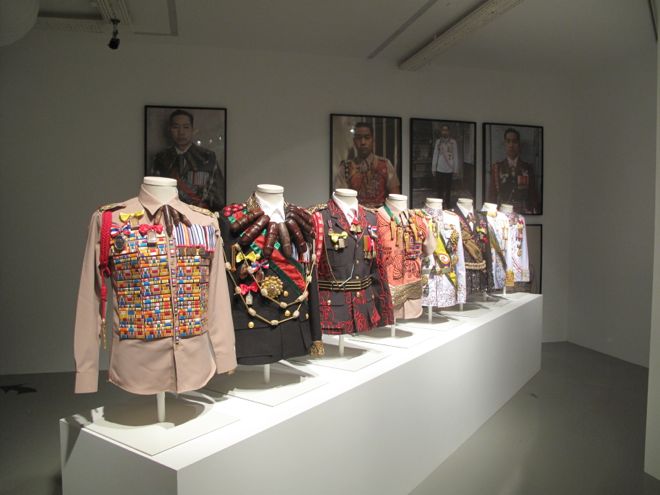
Jakkai Siributr, “Transient Shelter”, 10 digital prints, single-channel video, 10 uniform jackets embellished with various objects, 2014
Finally, the Moving Museum—literally a moving museum now housed in an Istanbul parking lot (Sishane Otopark, which indeed still functions as a parking lot; the Moving Museum occupies the lower floors in the basement). It is an intriguing idea, with 46 artists and collectives who produced works during three months of residencies in Istanbul—some Turkish, like Volkan Aslan, Aslı Çavusoglu, among others, and some non-Turkish, like Jon Rafman, Mai-Thu Perret, Rafaël Rozendaal and Ming Wong, among many others. Videos by Hannah Perry installed in the ramp between the floors were one highlight— though, in the end, the attempt to create a dialogue with the locality does not quite make up for the quality of the works here. Perhaps novel sites for display are unnecessary, given the energy for contemporary art that is infusing Istanbul.
(The trip to Istanbul was made possible courtesy of Contemporary Istanbul and Turkish Tourism)

